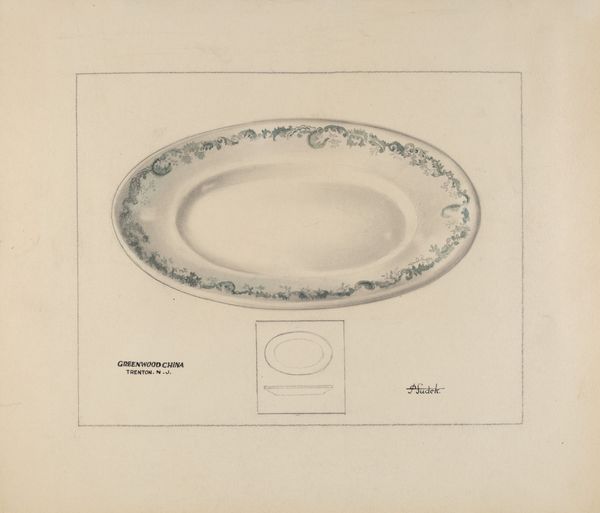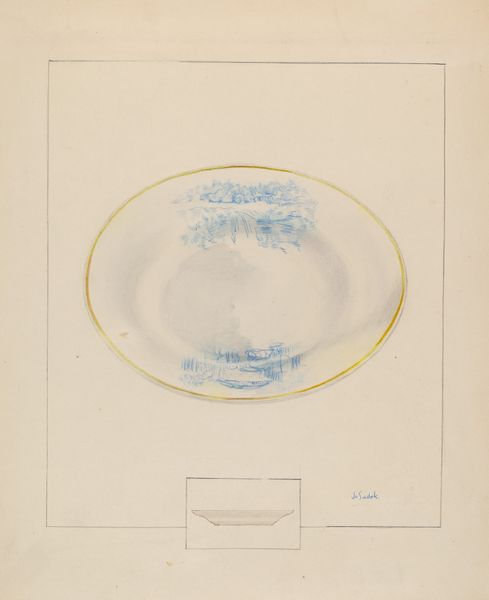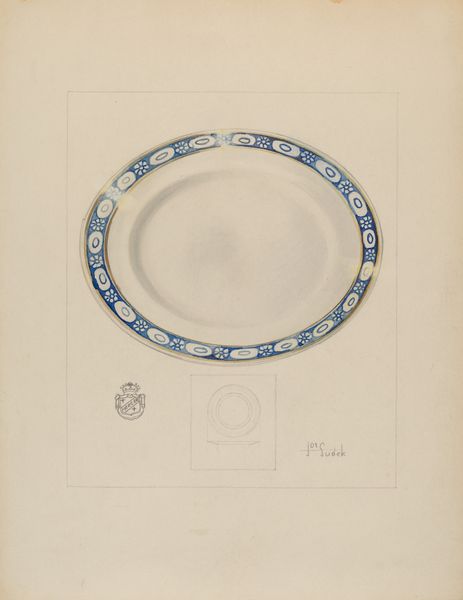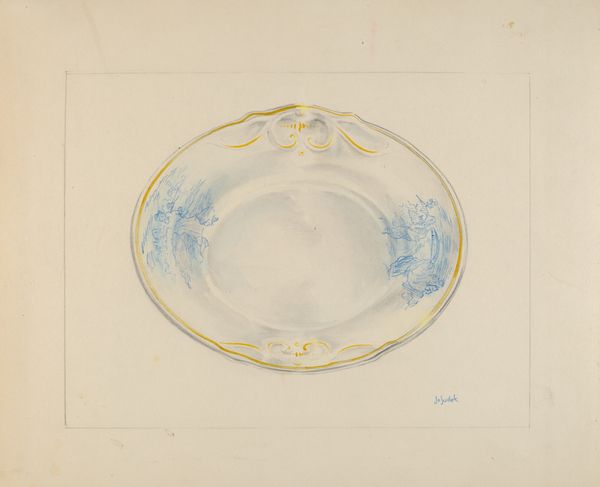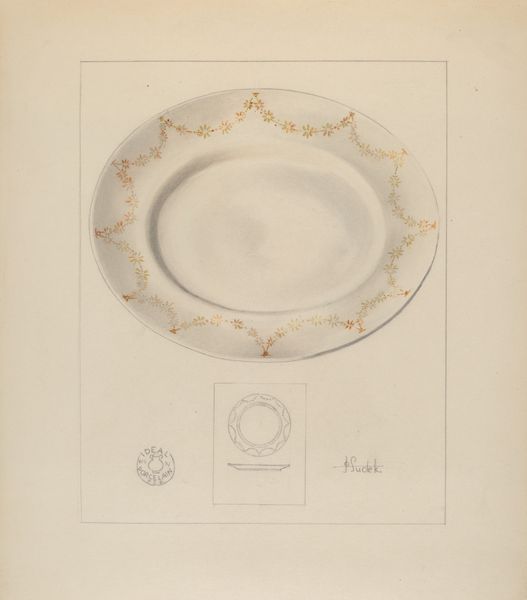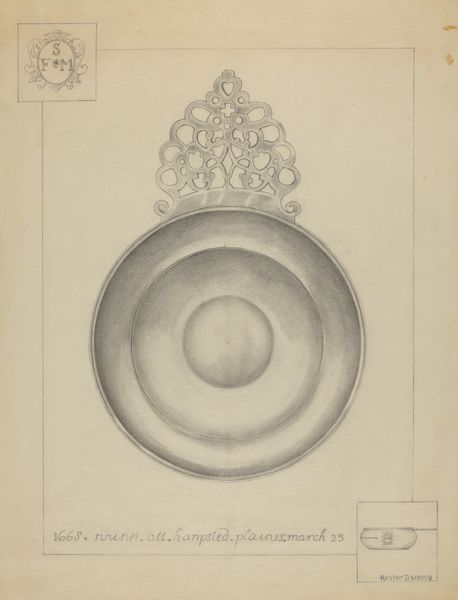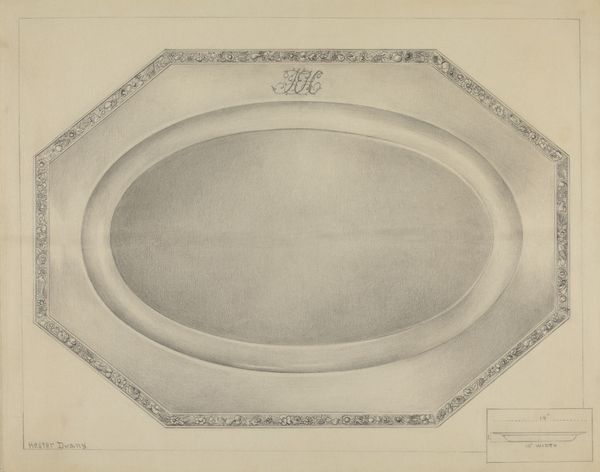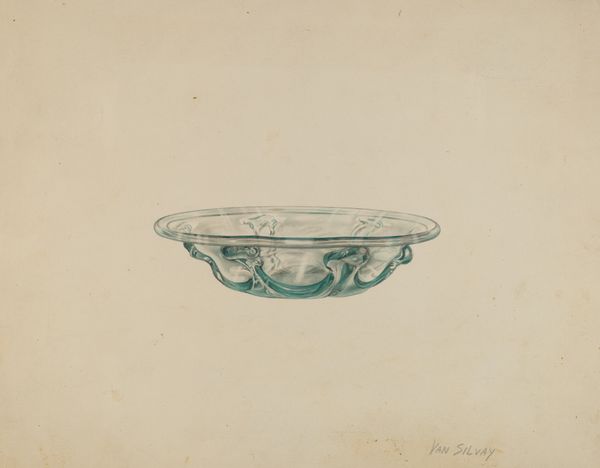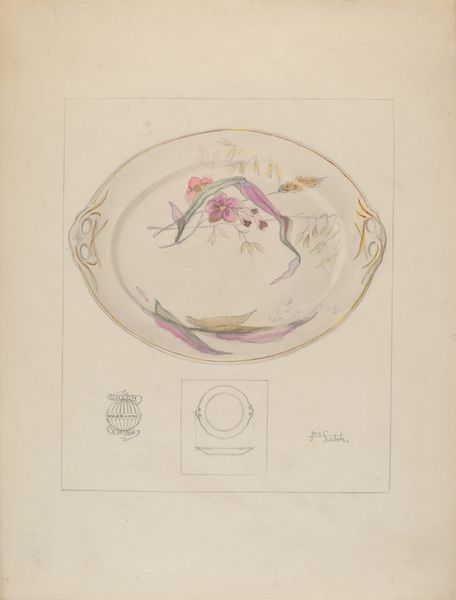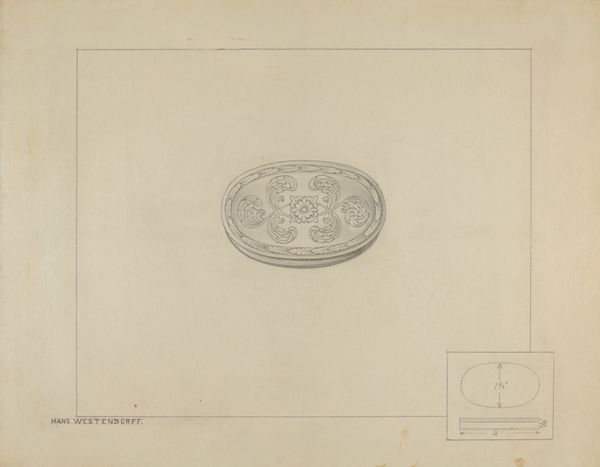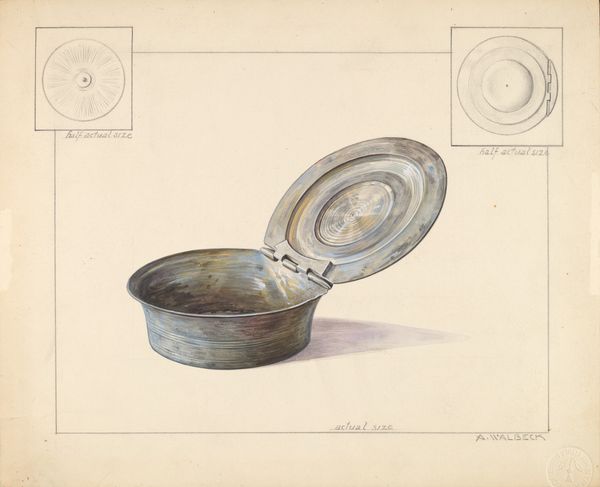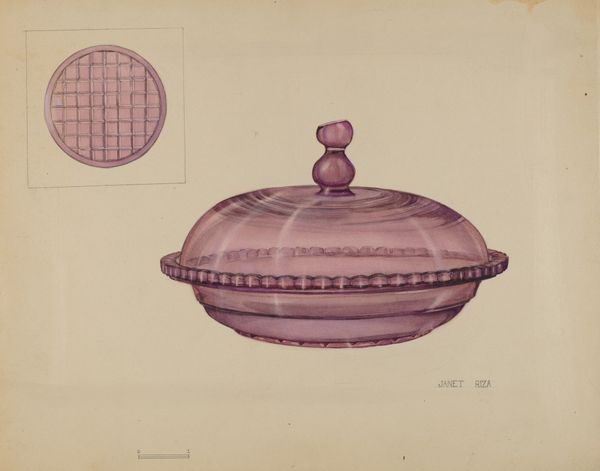
drawing
#
photo of handprinted image
#
drawing
#
aged paper
#
toned paper
#
water colours
#
pastel soft colours
#
ink paper printed
#
light coloured
#
watercolour bleed
#
watercolour illustration
#
watercolor
Dimensions: overall: 22.8 x 27.8 cm (9 x 10 15/16 in.) Original IAD Object: 5/8" High 6" Dia
Copyright: National Gallery of Art: CC0 1.0
Curator: Joseph Sudek's "Cake Saucer," created around 1936, offers us a glimpse into the aesthetics of interwar Czechoslovakia. It’s rendered delicately in watercolor and ink on paper. What are your initial impressions? Editor: There’s a subtle nostalgia at play here, don’t you think? It evokes a sense of faded elegance, like something glimpsed in an old family album. I'm immediately drawn to the understated materiality of the piece; the watercolour bleeds and pastel soft colours soften what would otherwise be quite functional object. Curator: I agree, that sensibility infuses much of Sudek’s work. His images, even when seemingly simple, carry a weight of history and societal shifts. He often documented everyday objects, elevating them to symbols of cultural memory. Editor: Exactly! And it raises questions about the value we place on these objects, both then and now. The act of hand-rendering a mass-produced item like a cake saucer also speaks volumes about the blurring of lines between craft and industry, between "high" art and commercial design. It’s a labour of love applied to a manufactured object, subtly pushing back against industrialization. Curator: That pushback resonates with wider cultural anxieties of the period. Think of the rising tensions, the shifting political landscapes… even the simple act of preserving an image of domesticity can be interpreted as a form of resistance, an attempt to hold onto a certain idealized vision. Especially if one considers what baked goods represent for specific groups and the female labour behind them. Editor: Indeed, by focusing on the hand-printed image and the watercolour’s imperfections, Sudek seems to deliberately subvert the pristine image that industrial processes promise. He brings the mark of the hand—the touch of the artist—to something ostensibly commonplace. The soft hues add another layer, mitigating the hard surface of the porcelain. Curator: Looking at it through the lens of contemporary feminist theory, there's also an intriguing commentary on domesticity and gender roles inherent in portraying something so distinctly associated with women's work in the home. It could speak to either upholding these traditions or subtly critiquing them, or perhaps both. Editor: It's interesting how a seemingly straightforward depiction can spark so many lines of inquiry when we consider the materials and the methods. I wonder who produced the original saucer. Did Sudek find pleasure, working through these mediums, during an unsettled political era. Curator: Thinking about the social context surrounding this simple piece—and the identities and politics within—reveals layers of meaning and resonance far beyond the depiction of tableware. Editor: Ultimately, this humble cake saucer, preserved through artful means, invites us to appreciate the material processes behind the manufactured while reminding us that beauty resides in the simplest things.
Comments
No comments
Be the first to comment and join the conversation on the ultimate creative platform.
